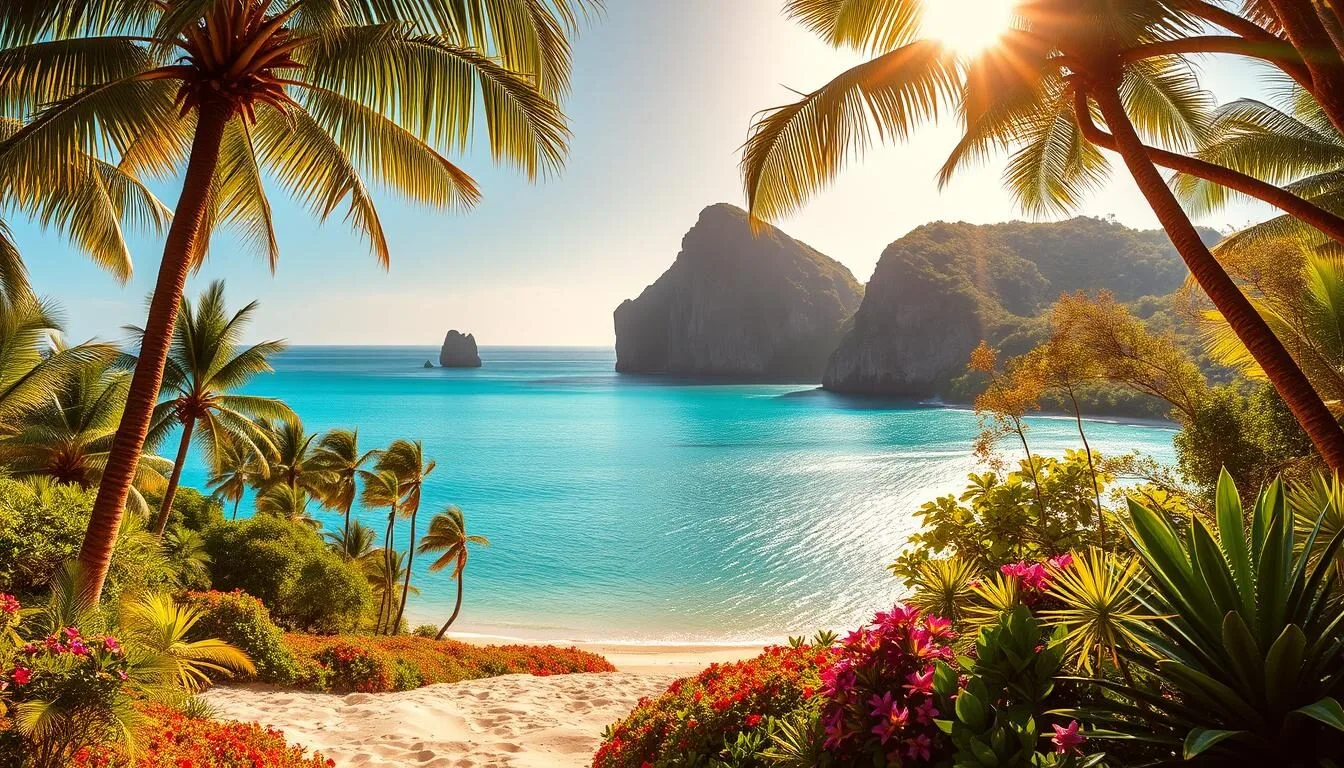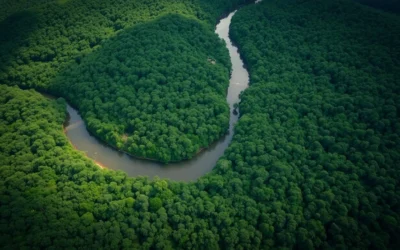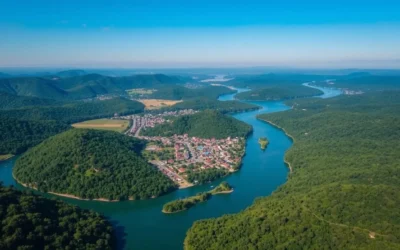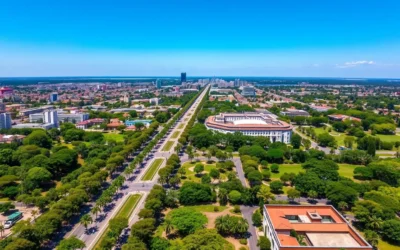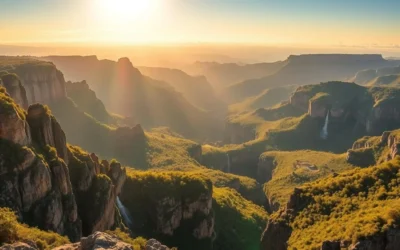✓ Accommodations✓ Flights✓ Rental Cars
You are about to explore one of Brazil’s most pristine natural settings, where the Amazon biome meets the coast.
This remote park borders French Guiana and protects a distinctive coastal mangrove ecosystem, offering a rare blend of coastal, marine, and rainforest environments.
As you venture into this exceptional biodiversity hotspot, you’ll encounter a complex mosaic of habitats, including dense tropical rainforest, sprawling mangrove forests, and tidal rivers, making it a paradise for wildlife enthusiasts.
Your experience in this stunning area will be filled with opportunities to witness the beauty of nature up close.
Discovering Cabo Orange National Park: Brazil’s Coastal Amazon Gem
Cabo Orange National Park is a hidden gem on Brazil’s northern coast, offering an unparalleled blend of Amazonian and coastal ecosystems. As you explore this unique national park, you’ll discover a complex mosaic of habitats that are both fascinating and fragile.
Location and Unique Geography
Nestled on the border between Brazil and French Guiana, Cabo Orange park boasts a diverse geography shaped by the interplay of ocean tides and river flows. The Oyapock River, which marks the international border, is a key feature of this landscape. The terrain varies dramatically, from dense tropical rainforests to sprawling mangrove forests, swamps, and flooded grasslands.
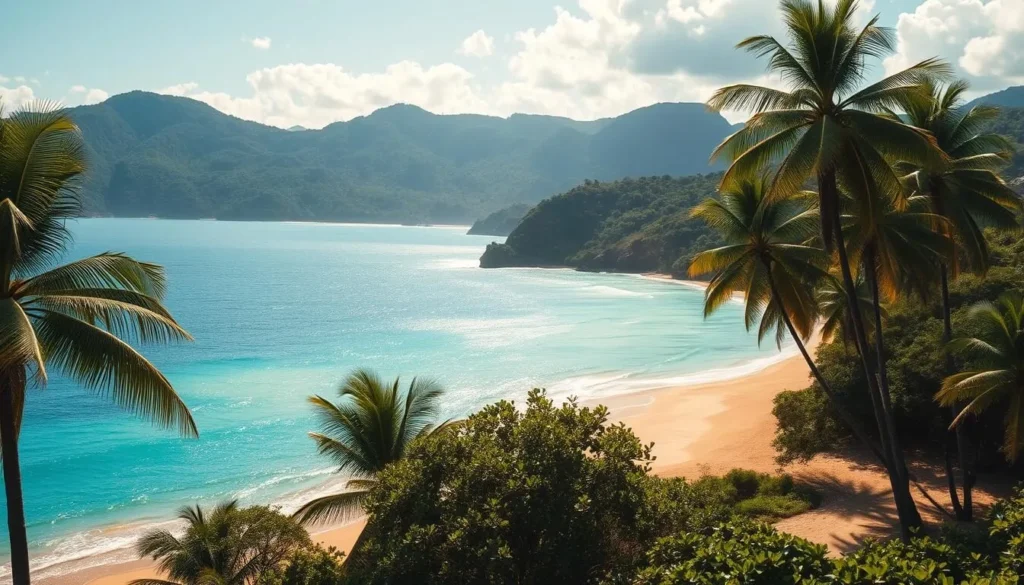
The Park’s Ecological Significance
The ecological significance of this area cannot be overstated. The park protects a variety of ecosystems that are increasingly threatened worldwide. The dynamic interplay between ocean tides and river flows creates ever-changing landscapes throughout the year, supporting a rich variety of life in its waters and on its land.
- The park’s diverse ecosystems support a wide range of flora and fauna, making it a critical conservation area in the region.
- The unique Caiena lowlands, where dense canopy forests meet coastal marshes, are a highlight of the park’s geography.
- The vegetation varies dramatically, from towering emergent trees to salt-tolerant mangroves and seasonally flooded savannas.
Exploring the Diverse Ecosystems of Cabo Orange
Exploring Cabo Orange National Park reveals a complex tapestry of ecosystems, each with its unique characteristics and biodiversity. As you venture into this pristine environment, you’ll discover a variety of habitats that support an incredible array of wildlife.
Mangrove Forests: The Coastal Guardian
The coastal mangroves of Cabo Orange National Park serve as a vital guardian against coastal erosion and provide a habitat for numerous marine species. These mangrove forests are not just a natural barrier but also a nursery for many marine creatures, making them crucial for the park’s ecological balance. Visitors can explore these mangroves by boat, witnessing the intricate network of roots and the diverse life they support.
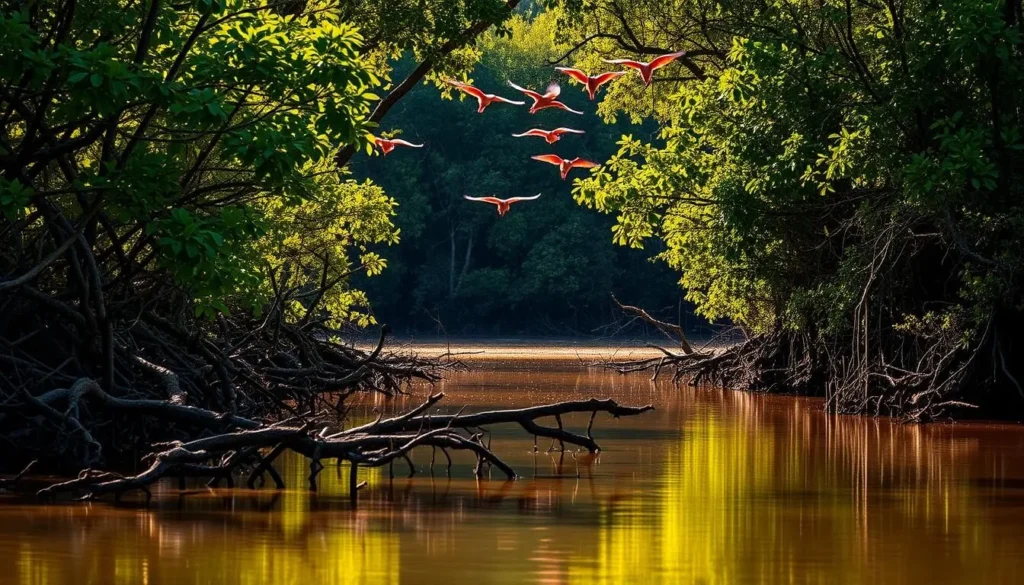
Rainforest and Wetland Habitats
Beyond the coastal mangroves, Cabo Orange is home to lush rainforest habitats and expansive wetlands. These areas create a mosaic of habitats that support a wide range of wildlife, from iconic mammals like jaguars and capybaras to a variety of bird species. The park’s wetlands, including seasonally flooded savannas and permanent swamps, are hotspots for biodiversity. Visitors can engage in activities such as birdwatching and guided boat tours to explore these diverse ecosystems.
Wildlife Watching Opportunities
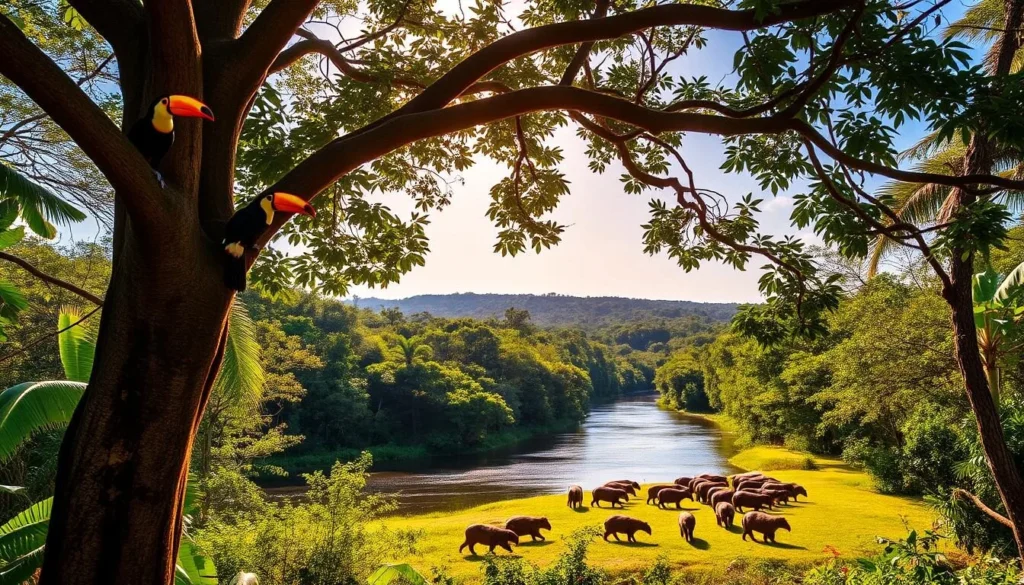
With its unique geography and rich ecosystems, Cabo Orange National Park provides an unparalleled wildlife watching experience. The park’s diverse habitats support a wide range of species, making it a must-visit destination for nature lovers and wildlife enthusiasts.
Iconic Mammals of Cabo Orange
Cabo Orange National Park is home to a variety of iconic mammals that visitors can spot during their visit. The park’s waters and wetlands are inhabited by species such as dolphins and manatees, while the rainforest is home to howler monkeys and other primates. As you explore the park, you may catch a glimpse of these incredible creatures in their natural habitat.
Bird Spotting: A Birdwatcher’s Paradise
Birdwatchers will find themselves in paradise at Cabo Orange National Park, where the birdlife is particularly rich and diverse. You can spot the vibrant scarlet ibis with its brilliant red plumage contrasting against the green mangroves, especially during the early morning or late afternoon. The park offers rare opportunities to observe the magnificent harpy eagle, one of the world’s most powerful birds of prey that makes its home in the canopy of the rainforest.
- Birdwatchers will find themselves in paradise at Cabo Orange National Park, where the birdlife is particularly rich and diverse.
- You can spot the vibrant scarlet ibis with its brilliant red plumage contrasting against the green mangroves, especially during the early morning or late afternoon.
- The park offers rare opportunities to observe the magnificent harpy eagle, one of the world’s most powerful birds of prey that makes its home in the canopy of the rainforest.
Boat Tours Through the Estuarine Labyrinths
Embark on a journey through the breathtaking landscapes of Cabo Orange National Park with a boat tour. The park’s unique estuarine labyrinths offer an unparalleled opportunity to explore the diverse ecosystems of this Amazonian gem.
Navigating the Oyapock River
Navigating the Oyapock River is an unforgettable experience. As you glide through the calm waters, you’ll be surrounded by lush mangrove mangroves and diverse wildlife. The river’s tranquil waters provide a perfect setting for observing the rich biodiversity of the region. With local guides on board, you’ll gain insights into the unique features of the river and its inhabitants.
Discovering Coastal Waterways and Oxbow Lakes
Beyond the main river, the coastal waterways and oxbow lakes offer a unique perspective on the park’s ecosystems. As these areas are explored, the changing tides dramatically alter the landscape, creating an ever-changing environment. This dynamic setting is home to a wide variety of flora and fauna, making it a fascinating experience for visitors.
Nature Photography: Capturing Cabo Orange’s Beauty
Cabo Orange National Park, with its varied ecosystems, provides endless opportunities for nature photographers to capture its beauty. The park’s unspoiled natural landscapes and relative isolation make it an ideal location for photography.
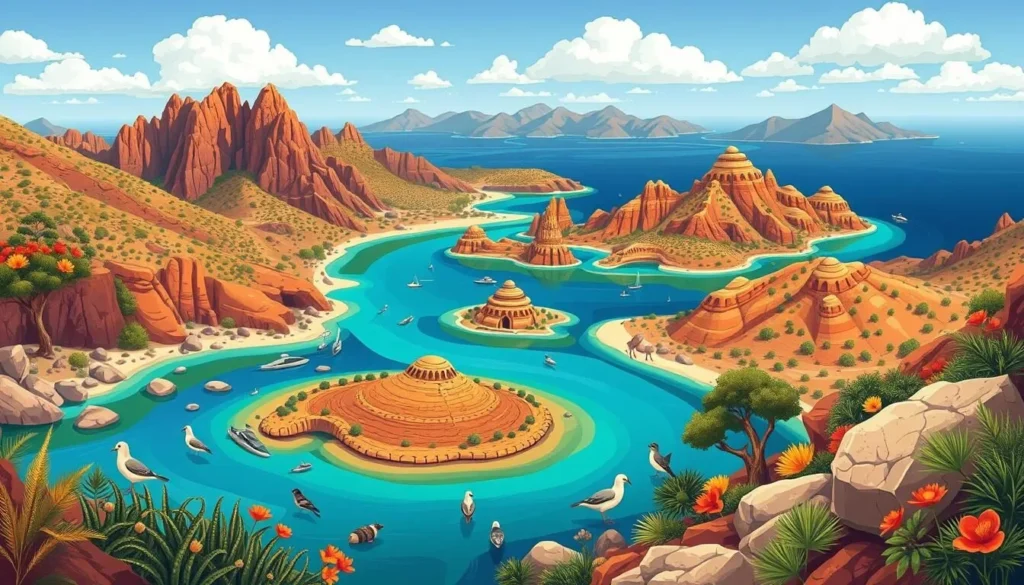
Best Locations for Landscape Photography
The park’s diverse landscapes, including mangrove forests, rainforests, and coastal areas, offer numerous spots for landscape photography. Early morning and late afternoon are the best times for capturing these landscapes, as the soft, golden light enhances their natural beauty. River edges and oxbow lakes are also prime locations.
Wildlife Photography Tips and Hotspots
For wildlife photography, patience and knowledge of animal behavior are crucial. The best time is during early morning and late afternoon when animals are most active. Bring a telephoto lens (at least 300mm) to capture distant wildlife without disturbing them. River edges and oxbow lakes are hotspots, especially during the dry season.
Plan to spend at least a full day at each photography spot to increase your chances of capturing unique moments.
Hiking and Walking Trails in Cabo Orange
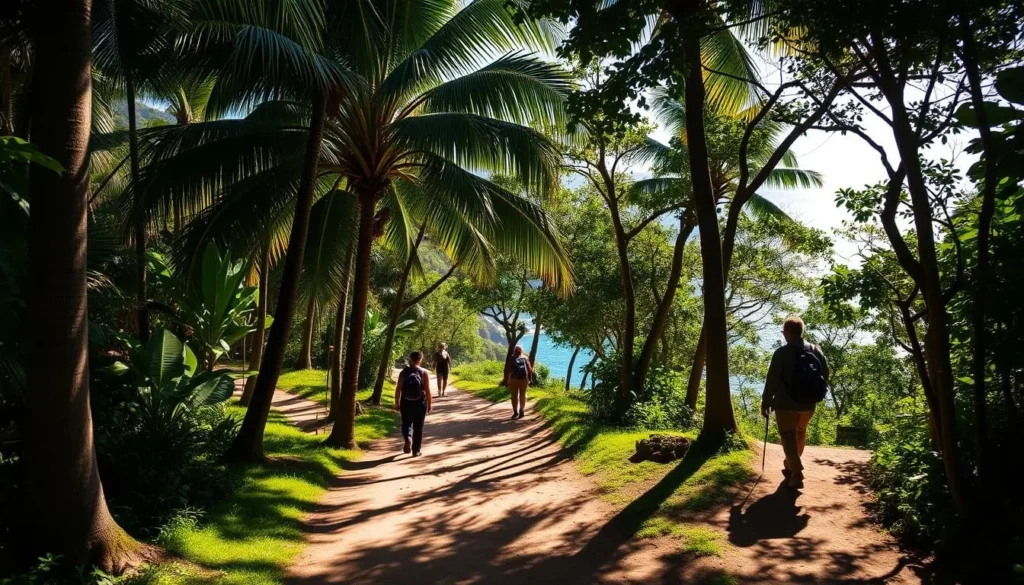
The diverse landscapes of Cabo Orange are best experienced through its hiking and walking trails, which cater to different interests and fitness levels. You can choose from a range of trails that offer unique experiences, from the serene beauty of coastal paths to the adventure of rainforest treks.
Coastal Paths with Ocean Views
The coastal paths in Cabo Orange National Park offer breathtaking ocean views and a chance to enjoy the park’s unique coastal ecosystems. You can take a leisurely 30-minute walk along these paths, immersing yourself in the natural beauty of the area. The coastal paths are ideal for spotting marine life and enjoying the scenic vistas.
Rainforest Trails and What to Expect
For those looking for a more challenging experience, the rainforest trails of Cabo Orange offer a chance to venture into the dense interior of the park. Most guided rainforest hikes take around two to three hours to complete, giving you access to parts of the park that can’t be seen from the water. When hiking these trails, expect high humidity and occasional rain showers, regardless of the season. The best time for rainforest hiking is early morning when temperatures are cooler and wildlife is more active.
Cabo Orange National Park, Brazil: Best Things to Do – Top Picks
Exploring Cabo Orange National Park is an unforgettable experience, with its rich biodiversity and stunning landscapes. As you venture into this coastal Amazon gem, you’ll discover a variety of activities that showcase the park’s natural beauty.
Boat Safaris: The Ultimate Experience
Embark on a boat safari through the estuarine labyrinths of Cabo Orange, navigating the waters of the Oyapock River. This experience offers a unique perspective on the park’s diverse ecosystems, allowing you to witness the incredible life that thrives in and around the mangroves.
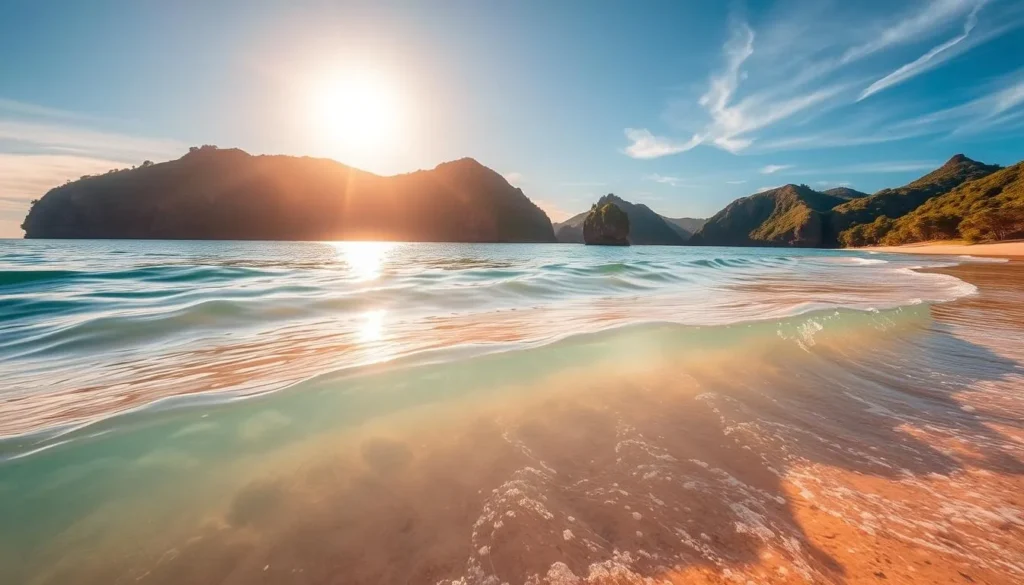
Birdwatching at Dawn and Dusk
Cabo Orange is a paradise for birdwatchers, with its diverse avifauna making it an ideal place to spot a wide range of species. The best times for birdwatching are at dawn and dusk when the birds are most active. You can explore the beaches and coastal areas to catch a glimpse of these beautiful creatures.
Exploring the Mangrove Ecosystem
The mangrove ecosystem is one of the park’s most fascinating features, offering insights into a unique environment that serves as the interface between land and sea. You can observe how mangrove roots create complex underwater structures that are crucial for maintaining healthy fish populations, making this ecosystem a critical place for marine life.
| Activity | Description | Best Time |
|---|---|---|
| Boat Safaris | Explore estuarine labyrinths and witness diverse ecosystems. | Any time of day |
| Birdwatching | Spot a wide range of bird species in their natural habitat. | Dawn and Dusk |
| Mangrove Exploration | Discover the unique mangrove ecosystem and its importance. | Low tide |
Whether you’re exploring the beaches, navigating the waters, or simply taking in the beauty of Cabo Orange, you’re sure to have an unforgettable experience. With so many things to see and do, Cabo Orange National Park is a must-visit destination for nature lovers and adventure seekers alike.
Guided Tours vs. Independent Exploration
When planning a trip to Cabo Orange National Park, one of the key decisions you’ll make is whether to join a guided tour or explore independently. Both options have their advantages.
Benefits of Guided Tours
Joining a guided tour can be an excellent way to experience the park. Guides provide insights into the unique ecosystems, including diverse wildlife and mangrove forests.
Self-Guided Exploration
If you prefer to explore on your own, you’ll need to obtain a permit from ICMBIO. The cost varies depending on the duration of your stay and areas you plan to visit.
- Obtain a permit from ICMBIO.
- Plan your itinerary carefully.
- Bring necessary supplies.
By understanding the options, you can make an informed decision that suits your travel needs.
Conservation Efforts and Sustainable Tourism
Cabo Orange National Park is a place where conservation and tourism come together in harmony. As a protected area, it faces unique challenges that require careful management and visitor awareness.
Current Conservation Challenges
The park is addressing several conservation challenges, including habitat preservation and the impact of tourism. Environmental education programs and increased research efforts are helping strengthen long-term conservation strategies.
| Conservation Challenge | Current Efforts |
|---|---|
| Habitat Preservation | Protected area management, research initiatives |
| Impact of Tourism | Sustainable tourism practices, visitor education |
How Visitors Can Contribute to Preservation
As a visitor to the park, you can make a meaningful contribution to conservation efforts. You can choose tour operators that follow sustainable practices, even if their prices are slightly higher. Respecting park regulations during your trip is also crucial.
Consider participating in citizen science programs that allow visitors to contribute to biodiversity monitoring efforts within the place. After your travel, share your experiences to raise awareness about preserving this special place.
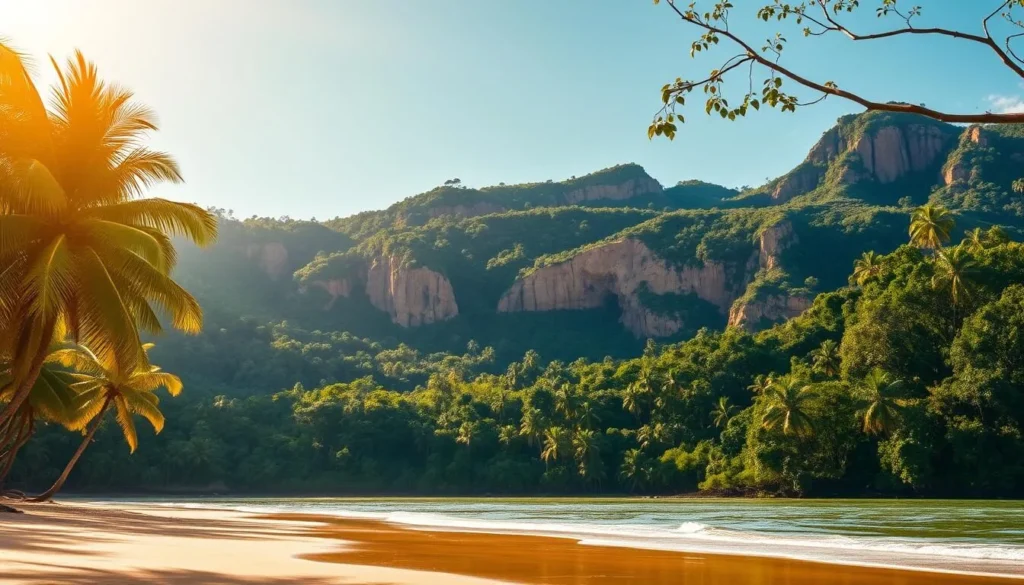
Conclusion
As one of Brazil’s most untouched national parks, Cabo Orange National Park offers a genuine wilderness experience that will leave you in awe of its natural beauty. This one beautiful and relatively undiscovered gem of South America is a must-visit destination for nature lovers and adventure seekers.
The park’s diverse ecosystems, including expansive beaches and intricate mangrove forests, cater to various interests. You can enjoy wildlife photography, bird watching, hiking through coastal paths, or taking boat tours through winding waterways. Whether you’re watching sun rise over pristine waters or hiking to discover secluded beaches, every moment is a testament to the park’s beauty and natural wonders.
As you plan your trip to this remote region, remember that your presence as a responsible visitor contributes to the ongoing conservation of this ecological treasure. With careful planning, you’ll experience an authentic wilderness adventure, creating lasting memories of this special corner of Brazil.
—
The above is subject to change.
Check back often to TRAVEL.COM for the latest travel tips and deals.
